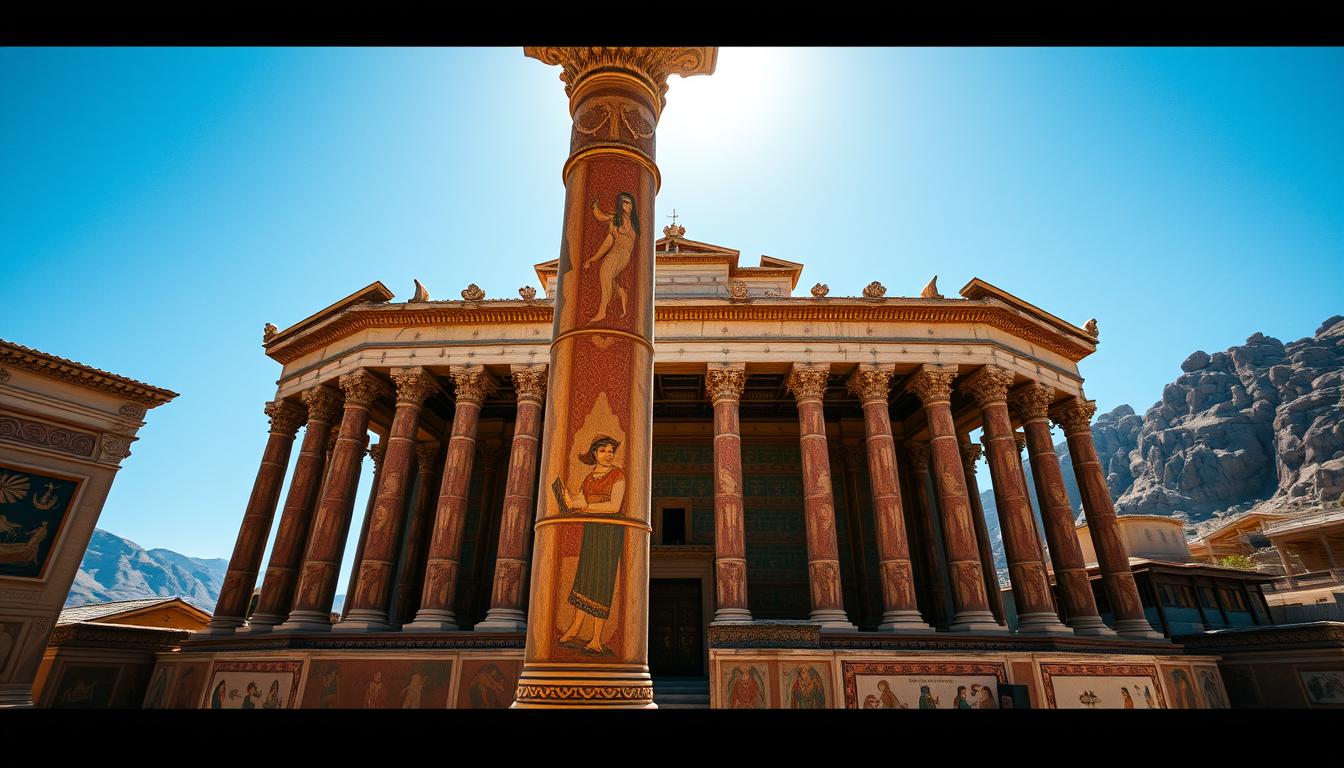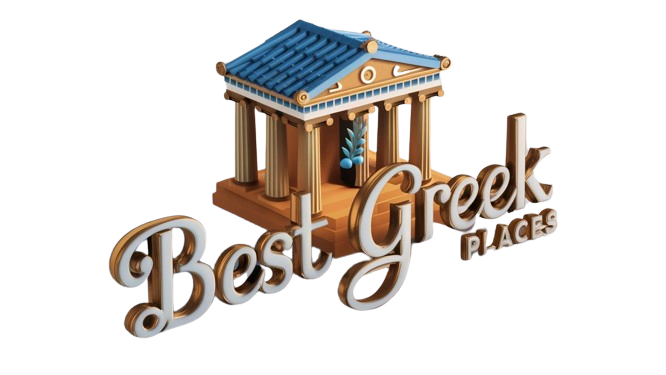Imagine stepping into a world where every corner whispers secrets of an ancient civilization. The Knossos Palace is not just a ruin; it’s a gateway to the past, where history comes alive. This site, with its labyrinthine corridors and vibrant frescoes, offers a glimpse into the Minoan culture that thrived thousands of years ago. It’s a place where you can feel the echoes of a civilization that shaped the course of European history.
As you walk through the site, you’ll notice the intricate details of the architecture, a testament to the ingenuity of the Minoans. The palace complex, covering approximately 20,000 square meters, is a marvel of ancient engineering. The Central Court, with its dimensions of 25 x 50 meters, stands as a reminder of the grandeur of this once-thriving city. The Throne Room of King Minos, considered the oldest in Europe, adds to the mystique of this historic site1.
Arthur Evans, the archaeologist who led the excavation, played a crucial role in bringing this ancient world to light. His reconstruction work has allowed us to visualize what the palace might have looked like in its prime. Whether you choose a private or group tour, the experience of exploring this site is nothing short of magical. It’s a journey that connects you with the past, offering a deeper understanding of the Minoan civilization and its legacy2.
Key Takeaways
- Discover the rich history of the Minoan civilization through the ruins of Knossos Palace.
- Explore the intricate labyrinthine design and vibrant frescoes that bring ancient culture to life.
- Learn about Arthur Evans’ reconstruction efforts and their impact on our understanding of the site.
- Gain practical insights from real traveler experiences to enhance your visit.
- Feel inspired by the historical wonder that every corner of the palace holds.
Introduction to the Ancient World of Knossos
Uncover the secrets of a civilization that shaped the course of history. The Minoan legacy is a testament to human ingenuity and creativity. Their advanced architecture, vibrant frescoes, and intricate designs continue to inspire awe today. This site offers a window into a culture that thrived thousands of years ago, leaving behind a rich tapestry of stories and achievements.
Discovering the Minoan Legacy
The Minoan civilization flourished on Crete from approximately 3000 to 1450 BCE, spanning over 1,550 years3. Their palatial complexes, like the one at Knossos, were marvels of engineering. Multistory structures, grand staircases, and advanced plumbing systems showcase their sophistication3. The vibrant frescoes, such as the “Prince of the Lilies,” offer a glimpse into their artistic brilliance3.
Arthur Evans, the archaeologist behind the excavation, played a pivotal role in bringing this ancient world to light. His reconstruction work allows us to visualize what the site once looked like4. This effort has deepened our understanding of Minoan culture and its influence on modern archaeology.
Setting the Stage for Your Journey
When planning your visit, consider the practical aspects to make the most of your experience. Tours often include car services, with pick-ups available from Heraklion, Chania, or Elounda2. The site is not fully accessible to wheelchairs, but the nearby Archaeological Museum is2. Guided tours provide valuable insights, while DIY options allow for a more personal exploration.
As you explore, take a moment to appreciate the cultural tapestry created by diverse interactions over time. The nearby city of Knossos once had a population of approximately 100,000 at its peak4. This vibrant hub of activity adds another layer to the story of this remarkable civilization.
Exploring the Mysteries of Minoan Civilization

Step into a world where history breathes through every stone and artifact. The Minoan civilization, which flourished from around 2700 to 1450 BCE, left behind a legacy that continues to captivate archaeologists and historians alike5. This ancient culture, centered on the island of Crete, was marked by its advanced architecture, vibrant art, and intricate rituals. As you explore, you’ll uncover the layers of a society that shaped the course of human history.
Understanding the Cultural Significance
The Minoans were pioneers in many ways. Their sophisticated drainage systems and multistory structures showcase their engineering prowess5. The frescoes adorning the walls of their palaces, such as the iconic “Bull-Leaping” painting, offer a glimpse into their artistic and spiritual world5. These artworks depict scenes of nature, rituals, and daily life, reflecting a deep connection to their environment and beliefs.
Their culture was also shaped by evolving rituals and art forms. The Central Court, a gathering place within the palace complex, highlights the importance of communal activities5. As you walk through the ruins, you’ll sense the vibrancy of a society that thrived for over a millennium.
Historical Anecdotes and Archaeological Insights
Archaeological discoveries at the site reveal fascinating stories. The eruption of the Thera volcano around 1620 BCE likely caused significant disruptions, influencing the decline of the Minoan civilization5. Additionally, evidence of seismic events and the Mycenaean influence around 1450 BCE mark pivotal moments in their history5.
Arthur Evans, the archaeologist behind the excavation, played a crucial role in reconstructing the palace. His work allows us to visualize what the site might have looked like in its prime6. Guided tours led by passionate experts bring these hidden narratives to life, offering a deeper understanding of this remarkable civilization.
As you explore, reflect on how these ancient achievements continue to inspire us today. The Minoan legacy is a testament to human ingenuity and creativity, inviting you to connect with the past in a meaningful way.
Knossos Palace: A Journey Through Time – A Cultural and Architectural Guide
Step back in time and witness the brilliance of ancient architects and their enduring legacy. The Knossos Palace is more than a ruin; it’s a testament to human ingenuity and creativity. As you explore, you’ll uncover the layers of a civilization that shaped the course of history. This site offers a unique blend of architectural marvels and cultural insights, inviting you to connect with the past in a meaningful way.
Architectural Marvels and Labyrinthine Corridors
Walking through the labyrinthine corridors, you’ll marvel at the ingenuity of Minoan builders. The complex includes royal quarters, workshops, and storerooms, all connected by corridors of varying sizes and directions7. These designs reflect a deep understanding of space and functionality, showcasing the advanced engineering of the time.
The walls of the palace are adorned with vibrant frescoes, such as the iconic “Bull-Leaping” painting, which captures the essence of Minoan artistry7. These works of art not only beautify the site but also provide a glimpse into the culture and beliefs of the people who once lived here.
The Role of Arthur Evans and Minoan Reconstruction
Arthur Evans, the archaeologist behind the excavation, played a pivotal role in bringing this ancient world to life. His reconstruction work has allowed us to visualize what the palace might have looked like in its prime7. Evans spent decades and a significant portion of his own fortune to uncover and restore this historic site, ensuring its legacy endures.
Today, the Knossos Palace stands as a living museum, where the past and present coalesce. The reconstruction efforts have transformed ruins into a cultural narrative, telling stories of ingenuity, tradition, and resilience. As you explore, you’ll draw inspiration from the way history comes alive in every corner of this remarkable site.
Planning Your Visit: Tours, Tips, and Local Insights

Prepare to embark on an unforgettable adventure through one of the most iconic historical sites in the world. Your journey to explore the heart of ancient culture begins with careful planning and practical insights. Whether you’re a history enthusiast or a casual traveler, these tips will help you make the most of your visit.
Guided Tours and On-site Experiences
Booking a guided tour is one of the best ways to immerse yourself in the rich history of this ancient site. Tours often include pick-ups from Heraklion, Chania, or Elounda, making it convenient to start your day8. Expert guides bring the past to life, sharing stories of the Minoan civilization and the significance of the palace’s intricate designs9.
Private tours offer a personalized experience, while group tours provide a social atmosphere. Both options include detailed itineraries that blend visits to the palace with explorations of Heraklion’s vibrant streets8. Choose the option that best suits your journey and interests.
Practical Advice for the Cretan Adventure
When planning your visit, consider the practical aspects to ensure a smooth experience. The site operates from 08:00 to 20:00 during peak season, with varying hours in the fall and winter8. Admission fees are €15 for general admission, with free entry on select days like International Monuments Day and European Heritage Days8.
Wear comfortable shoes, bring sunscreen, and stay hydrated, as exploring the site can take 2 to 3 hours8. The site is wheelchair-friendly from the entrance to the Central Court, ensuring accessibility for all visitors8. For a deeper dive into the Minoan legacy, visit the nearby Heraklion Archaeological Museum, which houses one of the most significant collections of artifacts in Greece9.
Ready to explore more of Crete? Check out these must-see gems on the island to complete your adventure.
Conclusion
As you leave this ancient site, the echoes of history linger, inviting you to reflect on the timeless stories etched into its walls. Every corner of this palace whispers secrets of a civilization that shaped the course of human history. From the intricate frescoes to the labyrinthine corridors, the site is a testament to the ingenuity of its creators.
Guided tours bring these stories to life, offering a deeper understanding of the culture and traditions that once thrived here. The reconstruction work by Arthur Evans allows you to visualize the grandeur of this ancient city, blending the past with the present.
Your visit is more than a tour; it’s a journey through time. For more information, explore the Knossos Palace history. Carry this inspiration into your next adventure, ready to uncover more layers of the world’s hidden treasures.
FAQ
What makes the Minoan civilization so unique?
How did Arthur Evans contribute to our understanding of Knossos?
What should I expect during a guided tour of the site?
When is the best time to visit for an optimal experience?
Are there any practical tips for planning my trip?
What role did the palace play in Minoan society?
How accurate are the reconstructions at the site?
Can I explore the site on my own, or do I need a guide?
Source Links
- Discover the secrets of Knossos Palace – Natania Travel
- Crete Full-Day Tour: Knossos Palace and Heraklion
- The History of Knossos and the Minoan Civilization: Exploring the Myths and Legacy – Exploring Creta – Crete Tours – Tailor made Tours in Crete
- Everything You Need to Know About Knossos Palace
- Knossos Palace, Heraklion 2024: A Gateway to Minoan Civilization
- Explore Knossos: Personal Tours with Streamlined Transfers
- Knossos Palace- Discovering Minoan Culture and Mythology
- The famous Archaeological Site Of Knossos Palace Crete Crete’s #1 Attraction
- Your Guide to Exploring Crete in 5, 7, and 10 Days | Mediteranean Islands

















